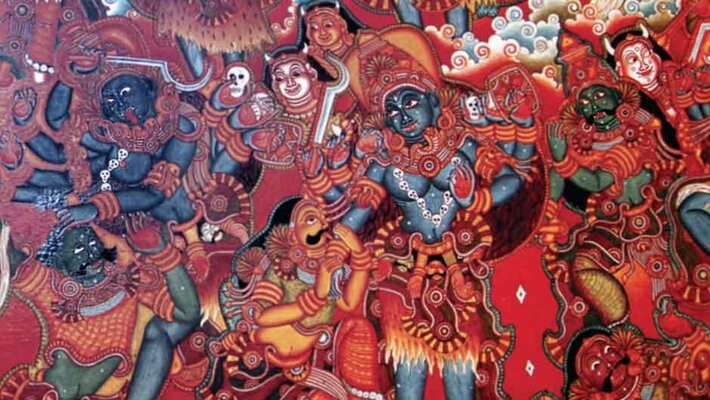
India is considered as the land of culture and traditional values. We worship our gods as our ancestors with an unconditional faith that once upon a time they have lived and walked amongst us. As their lives turned into stories, we all pass it on to our future generations in the forms of stories, folklores and songs. We all are more or less acquainted with Puranas, Vedas, Upanishads, Mahabharata and Ramayana. As told by our grandparents we believe some of the myths and legends mentioned across those ancient books to be true. But what about places? With highly specific details of landmarks and physical descriptions of some of the places in these ancient books, it still puzzles many of us that if the places truly have some mythological connections or not. Keeping our confusions aside, if we truly believe the mythological facts to be true, then it is truly amazing that these places stood the test of time and still bear the traces of our faiths and beliefs.
This article highlights some of the places in India which are believed to have mythological connections and are heavily visited by pilgrims from all across the globe.
1. Dwarka:
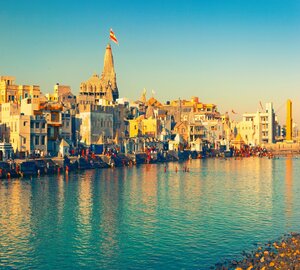 One of the most ancient cities in the country, Dwarka has mythological connections with Dwapar yuga; the 3rd yuga as per the Hindu tradition. Dwarka is believed to be one of the major dwelling places of lord Krishna. It is commonly believed that Krishna using his godly powers, claimed 12 acres from the ocean to build Dwarka and made it his kingdom after defeating his uncle Kansa in Mathura.
One of the most ancient cities in the country, Dwarka has mythological connections with Dwapar yuga; the 3rd yuga as per the Hindu tradition. Dwarka is believed to be one of the major dwelling places of lord Krishna. It is commonly believed that Krishna using his godly powers, claimed 12 acres from the ocean to build Dwarka and made it his kingdom after defeating his uncle Kansa in Mathura.
Today it is recognised as one of the Char Dhams; the four chief pilgrimage sites for the Hindus. Its meaning interprets to ‘Gateway to Heaven’, and is prominently mentioned across the Hindu epic, Mahabharata.
2. Dandakaranya:
 Affluently mentioned in Ramayana, Dandakaranya is holds a great significance for Hindus all over the world. Spread over 92200 sq. km, Dandakaranya is now majorly situated across the state Chhattisgarh along with parts of parts of Andhra Pradesh, Telangana and Odisha as well. Believed to be the forest where Ravana abducted Goddess Sita in Ramayana, the place is believed to be a site of penance owing to its connection with the famous Hindu epic. In Ramayana, Dandakaranya was mentioned as a home to Danda Kingdom, a clan of Rakshasas. A state of the Lanka Kingdom under the reign of Ravana, the province was then ruled by Ravana's governor Khara. According to the Ramayana, Dandakaranya was home to many demons and deadly creatures along with exiled persons. Lord Rama, his wife Sita and his brother Lakshmana spent the initial years of their fourteen years as exiles traveling around this region.
Affluently mentioned in Ramayana, Dandakaranya is holds a great significance for Hindus all over the world. Spread over 92200 sq. km, Dandakaranya is now majorly situated across the state Chhattisgarh along with parts of parts of Andhra Pradesh, Telangana and Odisha as well. Believed to be the forest where Ravana abducted Goddess Sita in Ramayana, the place is believed to be a site of penance owing to its connection with the famous Hindu epic. In Ramayana, Dandakaranya was mentioned as a home to Danda Kingdom, a clan of Rakshasas. A state of the Lanka Kingdom under the reign of Ravana, the province was then ruled by Ravana's governor Khara. According to the Ramayana, Dandakaranya was home to many demons and deadly creatures along with exiled persons. Lord Rama, his wife Sita and his brother Lakshmana spent the initial years of their fourteen years as exiles traveling around this region.
3. Kurukshetra
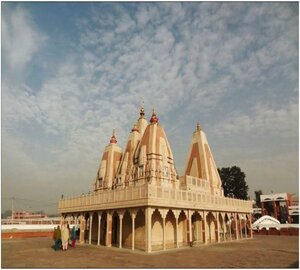 The place which took the test of human values and morals, Kurukshetra is widely depicted across the Mahabharata. A place which was believed to be a mute spectator of many bloodsheds, Kurukshetra is the place where the famous battle of Mahabharata was fought. The place gets its name from the ruler King Kuru, who prayed and wished for all his descendants to attain moksha and not be affected by illness, affection or accidents. After many generations, his descendants fought in the epic battle of the Mahabharata on the very site. The soil present in Kurukshetra is still red in colour, which is believed to be as such because of the blood of the soldiers. During excavations numerous iron weapons were found and as per experts’ analysis, these weapons can be traced back to 2800 BC (approx.).
The place which took the test of human values and morals, Kurukshetra is widely depicted across the Mahabharata. A place which was believed to be a mute spectator of many bloodsheds, Kurukshetra is the place where the famous battle of Mahabharata was fought. The place gets its name from the ruler King Kuru, who prayed and wished for all his descendants to attain moksha and not be affected by illness, affection or accidents. After many generations, his descendants fought in the epic battle of the Mahabharata on the very site. The soil present in Kurukshetra is still red in colour, which is believed to be as such because of the blood of the soldiers. During excavations numerous iron weapons were found and as per experts’ analysis, these weapons can be traced back to 2800 BC (approx.).
4. Hampi
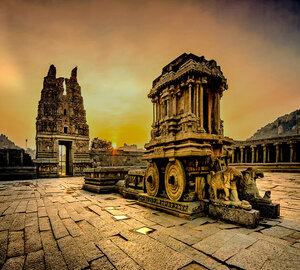 Having a connection with the epic of Ramayana, Hampi is believed to have been then Kishkindha, the capital of monkey king Sugriva, where the epic battle between Rama and Ravana was planned. The Anjaneya hill across river Tungabhadra is thought to be the birth spot of lord Hanuman. Other than its mythological connection, Hampi which is now in Karnataka is also a UNESCO World Heritage Site and has some of the most spectacular architectural marvels in the world.
Having a connection with the epic of Ramayana, Hampi is believed to have been then Kishkindha, the capital of monkey king Sugriva, where the epic battle between Rama and Ravana was planned. The Anjaneya hill across river Tungabhadra is thought to be the birth spot of lord Hanuman. Other than its mythological connection, Hampi which is now in Karnataka is also a UNESCO World Heritage Site and has some of the most spectacular architectural marvels in the world.
5. Chitrakoot
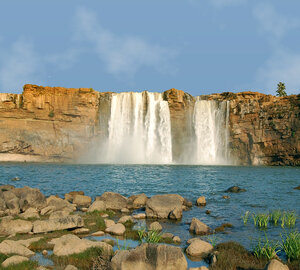 There are many places linked to lord Ram and Ramayana in Chitrakoot, their connection is undeniable. When Ram was sent to 14 years of exile along with his wife Sita and brother by his father on his wife’s command, it was apparently here in Chitrakoot he spent over 11 years. Another significant tale of Ramayana associated with this area is the renowned ‘Bharat Milaap’, when Bharat (Ram’s brother) reunites with him in the forests and pleads him to return to the kingdom.
There are many places linked to lord Ram and Ramayana in Chitrakoot, their connection is undeniable. When Ram was sent to 14 years of exile along with his wife Sita and brother by his father on his wife’s command, it was apparently here in Chitrakoot he spent over 11 years. Another significant tale of Ramayana associated with this area is the renowned ‘Bharat Milaap’, when Bharat (Ram’s brother) reunites with him in the forests and pleads him to return to the kingdom.
When Ram refuses, Bharat instead takes his slippers to place on the throne. Due to this legendary significance, Chitrakoot has become a significant place of pilgrimage, appealing many pilgrims from around the world.







